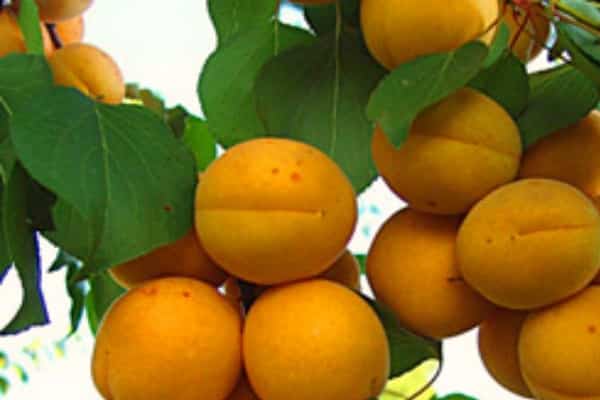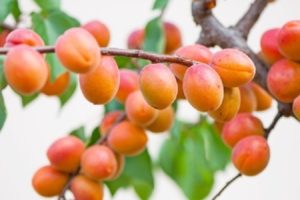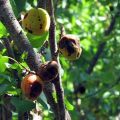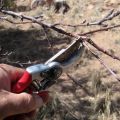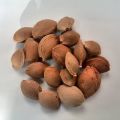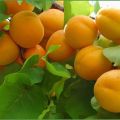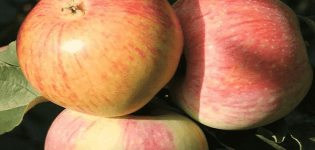Description of the variety of apricots Peach and characteristics of frost resistance, advantages and disadvantages
In many countries breeders, by crossing different fruit trees, produce hybrids that combine the quality characteristics of several crops. In taste and aroma, the Peach apricot fruit resembles the Breda variety, which was very popular in Europe. Gardeners of the Nikolaev and Odessa regions of Ukraine speak positively about the hybrid, cultivate it in the North Caucasus. The pulp of the fruit is sweeter than that of ordinary apricots, it has a pineapple smell.
History of origin
Today, breeders are breeding not only new varieties of fruit trees, but also hybrids that are distinguished by their endurance, are less likely to be affected by diseases, and the fruits have an unusual, but also pleasant taste. Scientists got the Manor by crossing cherries with plums. The tent, which is grown in the Caucasus, conquers with the rich aroma of cherry plum, a beautiful purple color, but does not contain the characteristic sourness, it is interrupted by the sweetness of the plum.

Apricot Peach breeders bred by crossing both popular garden crops, as a result of which they got a self-fertile hybrid, pleasing with high yield, disease resistance, pleasant taste of rather large fruits.
Description
The hybrid apricot tree does not grow higher than 3 meters, there are no difficulties with fruit picking. The variety has a round and wide crown and thin shoots, which have to be shortened every year. The smooth leaves of a rich green color expand from end to base.
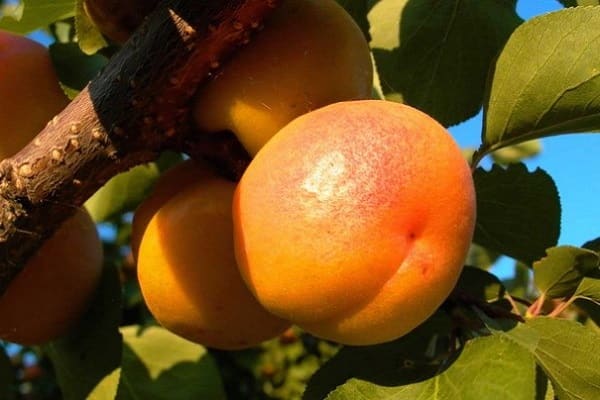
The fruits are different:
- bright orange;
- matte skin;
- juicy pulp;
- slightly bumpy surface;
- oval shape.
In the taste of apricot, acid is harmoniously combined with sweetness, and the smell is reminiscent of the aroma of tropical pineapple. The hybrid inherited the shape of the leaves and the size of the fruits from the peach. The mass of some specimens reaches 60 g.
Before planting an apricot in the garden, you need to carefully read the description of the variety, since, in addition to its advantages, the plant also has disadvantages. The pulp ripens unevenly, the stone does not separate well, the ripening period of the fruit stretches for a long time.
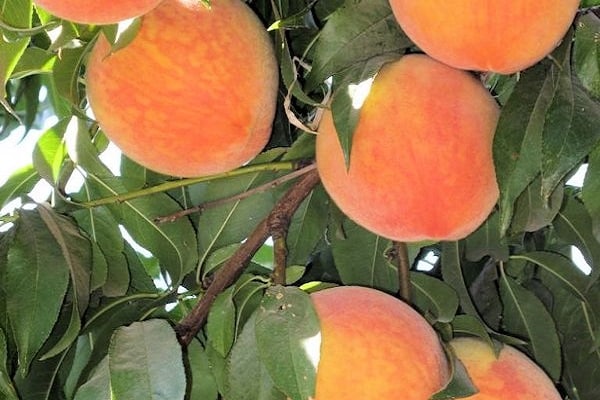
Characteristics of the tree and fruit
The tree blooms in the second half of May, when frosts are rare, the variety can be cultivated in mid-latitudes, but the apricot has not spread there.
With a lack of moisture, the ovary of the hybrid crumbles, with its excess and overripe, the pulp becomes mealy, the taste worsens. The life span of a tree does not exceed 10 years.
Growing features
Apricot Peach, although it is considered a hardy crop, does not always take root well, sometimes it does not please with sweet fruits even in the southern regions.
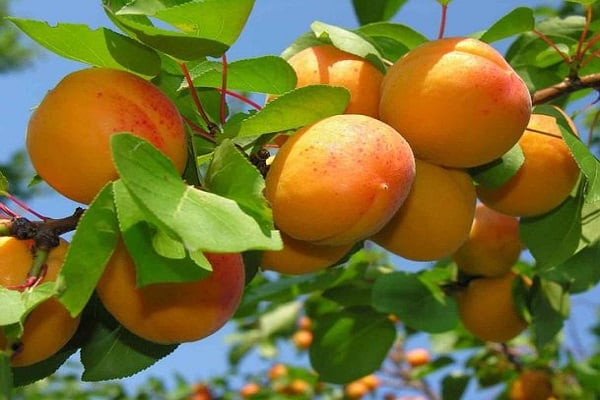
Choosing a landing site
A site for growing a tree must be looked for carefully. A heat-loving culture needs a lot of sun, it does not tolerate cold winds blowing from the west and north. You can protect apricots from drafts with buildings, a fence, but the shadow from them should not fall on the tree.
You should not plant the plant in a low place where groundwater comes close to the surface of the earth. The roots will not withstand excess moisture and will rot. The best place for growing a hybrid is the slightly elevated, well-lit southern side of the site.
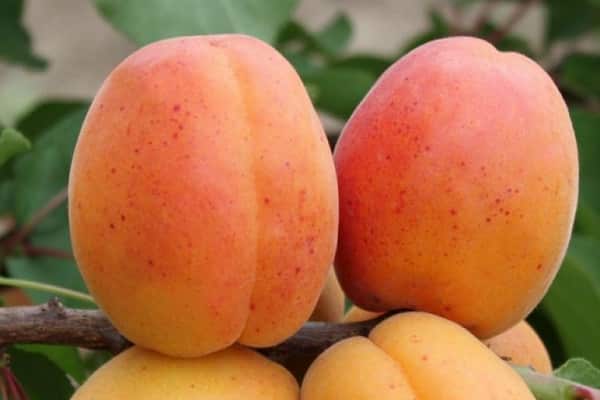
Landing dates
Young trees are sold in the market both in spring and autumn. The apricots selected in the nursery take root better, and there is a high probability that it will be the Peach variety, and not the wild, that grew next to the railway. In the south, planting is resorted to in March, in the middle lane - in May.
Apricots manage to get used to new conditions if they are moved to open ground in September or October; in the North Caucasus or Ukraine, trees are planted in November. Place them at a distance of 4 m from each other.

Soil type
Apricots do not grow where groundwater is located closer than 3 meters from the surface of the earth. The culture feels best on light loams, sandstones, irrigated chernozems, in which trace elements and vitamins are present in large quantities. The tree does not tolerate acidic soils. To reduce this figure, the site is limestone with ash.
Heavy soil must be diluted with peat and sand. Apricot does not grow on the clay itself.
Care
In addition to observing the rules of agricultural technology, a hybrid plant needs nutrients, moisture, protection from pests and diseases.
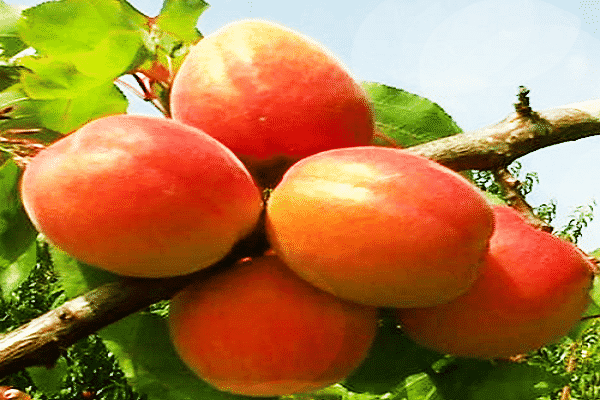
Watering
Some summer residents mistakenly believe that if the apricot is drought tolerant, there is no need for irrigation. When mulching the ground in the near-trunk circle, trees are rarely watered, but in the heat it is necessary to check if moisture is present at a depth of 10 cm.If the earth has dried out, several buckets of water must be added under the apricot.
Top dressing
How you fertilize a tree depends on its age and soil type. A two year old hybrid needs organic matter. For one plant, a bucket of rotted manure is enough, a quarter of a glass of ammonium nitrate, potassium chloride and 130 g of superphosphate are also introduced.
For a five-year tree, the dosage of mineral fertilizers is increased, organic matter will need at least 25 kg.
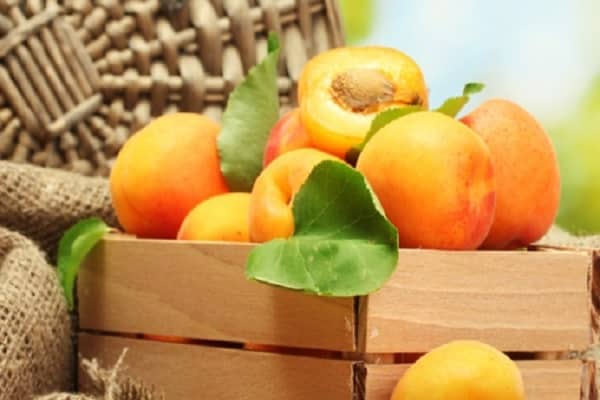
Advantages and disadvantages
Apricot Peach is valued for the fact that it tolerates both drought and cold, quickly recovering from spring frosts. The ovary does not die because the tree blooms late. The advantages of a hybrid include:
- no need for pollinating neighbors;
- high productivity;
- good transportability;
- excellent fruit appearance.
The hybrid is rarely affected by curly leaves and perforated spots. The significant disadvantages of apricot are called uneven ripening of the pulp, a short period of life.
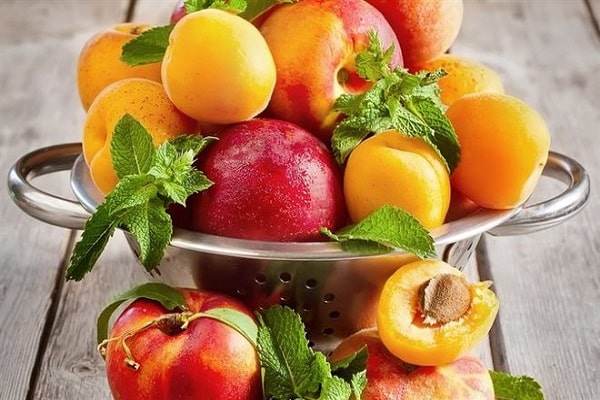
Pest and disease control
Cool weather provokes the activation of fungi, the reproduction of which leads to infection of fruit trees with gray rot and coccomycosis. It helps to prevent the occurrence of a problem:
- Pruning diseased shoots.
- Burning of blackened fruits and leaves.
- Spraying plants with Bordeaux liquid or copper sulfate solution;
- Treatment of wounds and cracks with antiseptics.
To cope with moniliosis, systemic fungicides are used. To combat the moth, aphids, spider mites, folk remedies are used in the form of decoctions and infusions of garlic and onions or insecticides.
